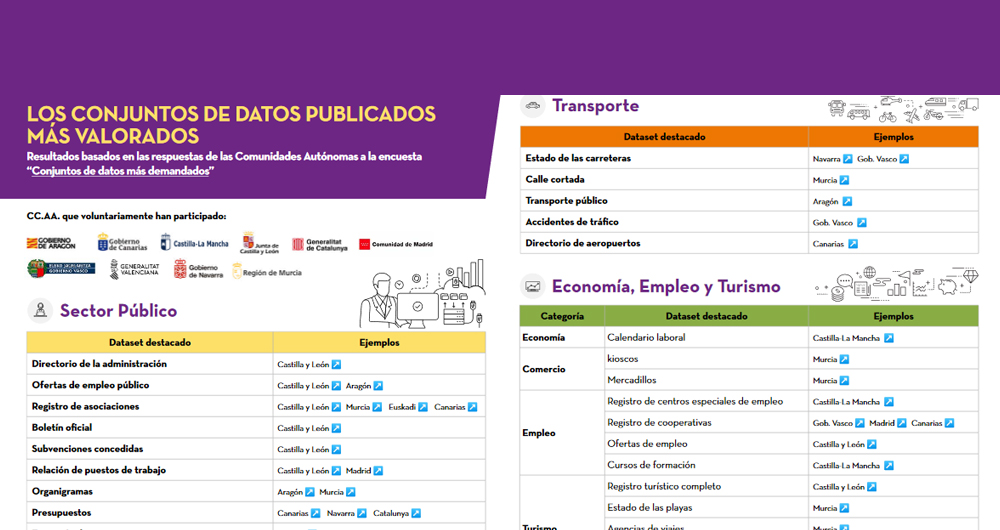La Rioja is working on a medium-long term strategy for the opening up of data
Fecha de la noticia: 16-11-2021

Under the name of Dato Abierto, the open data initiative of La Rioja continues to grow. To date, its portal has more than 400 datasets, most of which are federated in datos.gob.es. These datasets have accumulated more than 120,000 downloads, the most popular being those related to public procurement, weather stations and the municipal census.
In order to continue promoting the publication of datasets, but also their reuse, the initiative is working on a medium and long-term action plan, as well as on projects to improve interoperability.
A clear roadmap for data openness
Following the commitments made by the Autonomous Community in the IV Open Government Plan, La Rioja is carrying out actions to improve access to the information it holds. The first step is the development of a roadmap with a forecast of the datasets to be opened each year. To this end, a preliminary analysis has been carried out:
- On the one hand, they have analyzed their current portals, both open data and transparency, using the MESTA methodology (Methodology for evaluation and monitoring of the transparency of public activity) of the Council for Transparency and Good Governance.
- On the other hand, they have performed a benchmarking with other national and European public sector open data portals. As a result, good practices have been collected according to reference systems such as the Open Data Barometer, the Open Data Index, Open Data Charter, ODRA (V3.1), the UNE 178301, the FEMP and the OGP Euskadi.
The result of the study is the definition of 20 data families:

The attached document shows which international indicators have been used to define each category, as well as the resources to be opened related to each field. For example, in the case of health data, they have been inspired by the best practices of the Open Data Barometer and the ODRA (V3.1). The data proposed to be opened in this category are: activity data for certain services, everything related to COVID19 (number of antigen and PCR tests, number of cases, ICU places occupied, etc.), user satisfaction indicators, geocoded hospital and outpatient data, and basic health areas.
The selection, monitoring and evaluation of the published data and its associated metadata will be carried out by an internal Open Data Committee, soon to be created.
Improved interoperability
In La Rioja, they are aware that it is not enough to open data, but that it is necessary to do so according to requirements that facilitate its use. For this reason, they are working on a project for the semantic representation of information: the Semantic Platform of the Government of La Rioja.
Through this platform, public resources are classified into different subjects and represented by ontologies that will make it possible to have a standardized common frame of reference. The aim is to implement a system based on Tim Berners Lee's 5 stars, thus enabling data to be referenced among themselves (what we know as Linked Open Data).
For this work they use as reference dictionaries and thesauri such as EUROVOC and thematic classifications such as those provided by the Technical Standard for Interoperability (NTI).
Going a step further: the implementation of new technologies at the service of open data
In line with the National Artificial Intelligence Strategy (ENIA), La Rioja is promoting the use of AI for data-driven public management. They are currently immersed in a pilot where machine learning techniques are used for the interpretation of natural language. Thanks to this, they can automatically analyse metadata, extract entities and classify them thematically based on pre-established dictionaries.
Finally, it should be noted that among its future plans is also the approval of a law on Transparency, Good Governance and Open Data which, among other issues, regulates the opening of data.
With all these actions, La Rioja seeks great advances in integrating, unifying, publishing, linking and exploiting the information existing in the institution. This work is essential so that companies, individuals or the public administration itself can work with these data in a simpler way and extract all the value.














